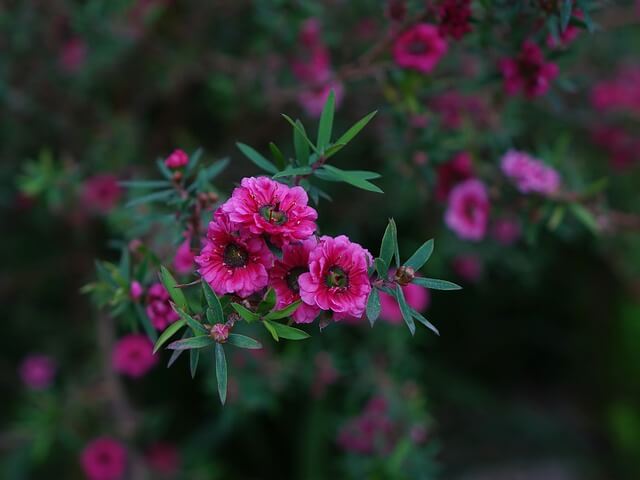Manuka honey in the kitchen – what’s worth it?
Manuka honey is amazing. What makes it so are its properties, its flavor, its origin, its extraction method, and the uniqueness of the plant itself from which it is made. In fact, it might never have come into being if the Europeans who reached the shores of New Zealand hadn't brought bees with them. And so the story of this unique honey began.
The origin of Manuka honey
In New Zealand and Australia, you'll find a plant with certain leaves that are rough and sharp and never fall off. Leptospermum scoparium, for that is the name of this mysterious specimen, reaches large sizes and has small inflorescences that are somewhat reminiscent of a cherry blossom. Bees can collect nectar from this unusual shrub for several weeks a year and process it into this precious New Zealand honey. The indigenous people of parts of Australia and Oceania know the health-promoting properties of the Manuka shrub. As a result, they take care of its undisturbed composition, even though obtaining it from just one species is an extremely difficult art, since there are many other palatable plants on this island.
Properties of Manuka honey
What makes Manuka honey so special is the amount of MGO, or methylglyoxal, it contains. No other food product contains it in such large quantities. MGO can be described as a natural antibiotic. It can perfectly cope with the first symptoms of a cold and support the fight against infections, bacteria, or viruses. With regular use, it can support the immune system and have an anti-inflammatory effect. Many people like to use it as an immunity booster. Please note that methylglyoxal is a natural substance. Despite its name, it has nothing to do with artificial ingredients added to food.
Manuka honey
Although Manuka honey differs slightly from standard products of this type, its properties were long overlooked. This was primarily due to its distinctive, rather bitter taste. It is often described as having a strong mineral, earthy, or even spicy flavor. At the same time, the honey has an intense, dark color, which differs from most of the golden honeys popular in Europe. However, this honey began to be used more widely when attention was drawn to its beneficial effects on the body. Over time, its refined flavor was also forged into an advantage, and it was learned to be used in flavor compositions.
This unique honey from New Zealand can be used successfully in cooking, but remember not to do so at too high a temperature. Excessive heat can lead to the loss of its valuable nutritional values. It's ideal for making water-based drinks, smoothies, or other cool beverages. Like any product of this kind, Manuka honey pairs well with sweet snacks.
It can be poured over baked gingerbread or cookies, and added to cooled semolina or millet. Its distinctive aroma also makes it a great addition to savory dishes. It pairs perfectly with lemon, which can be used, for example, in shrimp or salad dressings. Manuka honey is even used in macaroni and cheese. It's a great substitute for regular sugar. It's often chosen for fruit compositions and baked goods because it perfectly balances sweetness and adds a distinctive flavor to dishes. Using Manuka honey in the kitchen: You're only limited by your own culinary imagination. Its unusual flavor comes in many forms.
THE PUBLISHER'S CHOICE
Almonds 1 kg BIOGO
- €11,69
€13,75- €11,69
- Unit price
- / per
Walnuts 800 g BIOGO
- €8,65
€10,18- €8,65
- Unit price
- / per
Dried organic mango 400 g BIOGO
- €10,99
- €10,99
- Unit price
- / per
Dried White Mulberries 500 g ORGANIC
- €5,84
€6,87- €5,84
- Unit price
- / per
Dried organic figs 800 g BIOGO
- €30,12
- €30,12
- Unit price
- / per
Unpeeled buckwheat groats 1 kg BIOGO
- €2,81
€3,31- €2,81
- Unit price
- / per
Organic coconut flakes 500 g BIOGO
- €10,07
- €10,07
- Unit price
- / per
Organic oat flakes 600 g BIOGO
- €3,77
- €3,77
- Unit price
- / per
Organic cashew nuts 1 kg BIOGO
- €19,99
- €19,99
- Unit price
- / per
Milk thistle seeds 1 kg BIOGO
- €3,99
- €3,99
- Unit price
- / per









































































































































